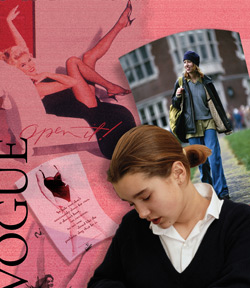|
|
Sexy Ads Turn Off Female Readersdownloadable pdf
For female magazine readers, sex doesn’t sell so much as it bores. So conclude three UF advertising professors in a new study that gauged young women’s emotional responses to ads featuring beautiful women from Vogue, Allure and other women’s magazines. The hotter the model’s attire or look, the more it left the women, well, cold, say UF’s Robyn Goodman, Jon Morris and John Sutherland. What the 100-plus college-age women surveyed in the study found far more appealing than provocative sex kittens were natural, pretty-in-an-everyday-way types, a look the researchers describe as wholesome. “What we found is the way that the industry and the way that consumers are looking at beauty are totally different,” said Goodman. The study is partly of interest because it clashes with the sex-drenched conventions of glossy magazine advertising. According to Goodman, it also brings to light a looming disconnect between generally male executives of companies seeking to market their products and the female consumers they’re trying so desperately to reach. The researchers launched the study with the original goal of determining what sort of models epitomized six different types of beauty — “classic feminine,” “sensual exotic,” “trendy,” “cute,” “girl next door” and “sex kitten”— that had been identified as advertising archetypes by earlier researchers. Some 258 women looked at an identical set of photos and rated the models for how well the six types described each. All of the photos had appeared in fashion magazines aimed specifically and uniquely at female consumers, including Vogue, Cosmopolitan and Allure. Analysis of the numbers soon revealed that the six types collapsed into two much more general categories: sexy and wholesome. The researchers then had 127 women give their emotional responses to the models that best fit these two descriptions. The results were unambiguous. The more lustful the models’ expressions and spare their attire, the more the women’s emotional reactions revealed that they were bored or uninterested. The more the models smiled naturally and displayed a minimum of skin, the more positive the women’s reactions. The study’s results are all the more intriguing because of the young age of the survey’s respondents, they noted. They agreed the results would likely have been even more pronounced had older women been surveyed. What’s the message for advertisers? First, sex isn’t a guaranteed sell. “I think advertisers would say if you show a woman a sexy picture, many of them will want to emulate it, but I think this research shows that’s not true,” Morris said. Second, while sexual themes may be appropriate for some products and publications, it’s important to think more broadly and field-test potential ads with consumers. “And if you’re asking, ‘Which direction should we go,’ err on the side of wholesome,” Goodman said. Jon Morris, jonmorris@ufl.edu Robyn Goodman, rgoodman@jou.ufl.edu John Sutherland, jsutherl@jou.ufl.edu Aaron Hoover |

